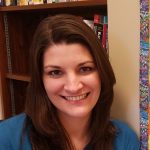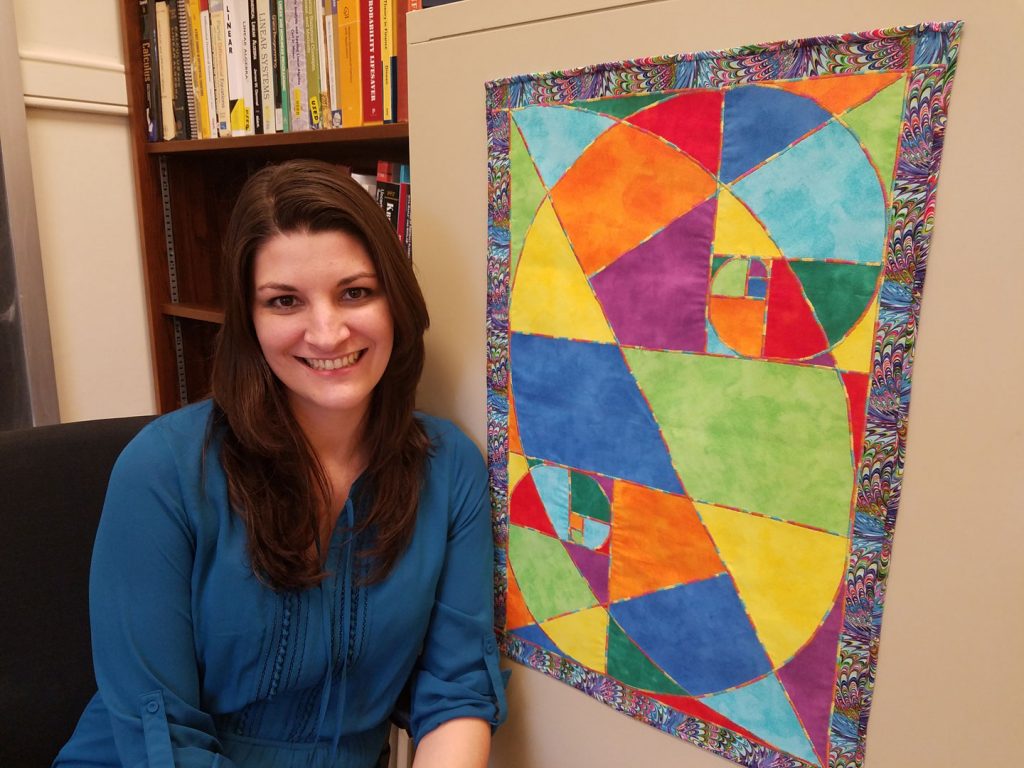Notice of Online Archive
This page is no longer being updated and remains online for informational and historical purposes only. The information is accurate as of the last page update.
For questions about page contents, contact the Communications Division.

Assistant Professor in Mathematics
Ph.D., North Carolina State University
What I’m teaching:
Calculus 3; Applied Statistics
What I’m focused on:
“My research focuses on this up-and-coming field called uncertainty quantification. The sorts of questions that I answer are: Can I take this very complex physical model and reduce it to something in a simpler form without losing the accuracy of the original? How do uncertainties impact the value—can you trust it to be accurate? This field has applications to just about everything. My dissertation work focused on how this applied in the field of nuclear engineering. They need to know that their function values are reliable. Now I’m getting into mathematical biology. I’m working on a project now where I am looking at cancer stem cells and how they affect tumor growth. It’s an exciting field to be in because I can work with just about everyone. Over the course of my career, I’m going to get to dabble in a lot of different fields because everyone needs this kind of analysis.”
What drew me to Lafayette:
“I went to a small liberal-arts college [University of Portland], and I had these great connections with my professors. I could just walk into anyone’s office and have a conversation. That’s the environment I want to teach in. I was looking for schools like that—where I could have these one-on-one connections with students. I think Lafayette is a great place to have that. I had professors who made such a huge difference in my life, and I’d like to be that person for someone else.”
What students can expect:
“I’m on a mission right now to make my teaching much more active. I think traditionally, math has been taught in lecture form, where students sit and take notes and then take an exam. I don’t think that’s the most effective way to learn. I participated in several workshops this summer, and I’m in the process of switching my approach over to having a group-work environment where I help to facilitate students’ learning. So they should expect that in my classes they’ll get to know their classmates and they’ll be working with them on a daily basis. They’ll have to participate and throw out ideas.”

What’s in my office:
“My grandmother taught me to quilt when I was 9 years old. I picked it up again when I was in grad school; I recognized I needed a hobby. Now I make tons of quilts and send them to all my family members. This particular piece connects my passions: There is a mathematical basis to it. It has two Fibonacci spirals. Every number after the first two is the sum of the two preceding ones: So 1 and 1 and then 2, 3, 5, and so on. It shows up all the time, both in mathematics and in the real world. Items in nature tend to follow this sequence. You can see it in pinecones and nautilus shells. I think it’s really neat how nature speaks the language of math.”
What’s not on my CV:
“I am an avid reader. In January 2017, I made it my New Year’s resolution to make pleasure reading a priority. So every single day I have to read one chapter of something that’s not math. I haven’t missed a day. It’s been great. I’ve read so much in the past year and a half. I feel that I’m much more well-rounded as a result, and I feel like I can speak to people outside my department in a more knowledgeable way.”

